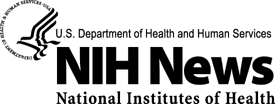NIH Roadmap Continues to Move Forward on All Fronts
Establishes New Resources to Accelerate Science
Bethesda, Maryland — Today, the National Institutes
of Health (NIH) celebrates the second anniversary of progress guided by the NIH
Roadmap for Medical Research. Launched in September 2003, the NIH Roadmap is
a series of strategic initiatives fueling the movement of research discoveries
from the bench to the bedside.
“The NIH Roadmap remains a key investment for accelerating medical research
to benefit the public,” said Health and Human Services Secretary Michael Leavitt. “I
am pleased with the progress made through the NIH Roadmap and look forward to
major advances in the coming years.”
“From improving our basic understanding of biological processes to translating
discoveries from the bench to the bedside, the NIH Roadmap is advancing science
on all fronts,” said NIH Director Elias A. Zerhouni, M.D. “We have built a strong
foundation for the range of initiatives that will change the way we move science
forward.”
In fiscal year 2005, NIH funded $235 million in new and continuing Roadmap projects.
Key NIH Roadmap accomplishments include:
 |
Created New Pathways to Discovery with the establishment
of advanced centers in nanomedicine, starting with four centers that will
share approximately $42 million over five years. This emerging field could
offer new ways of curing disease or repairing damaged tissues on a molecular
scale. In addition, the Molecular Libraries Screening Center Network began
work in June 2005 at a cost of $88.9 million over three years. |
 |
Developed Research
Teams of the Future with awards of more than $36 million through
fiscal year 2006 to fund 21 Exploratory Centers for Interdisciplinary Research
throughout the country. These centers allow grantee institutions to build teams
of researchers from the life, physical, material, and computational sciences. |
 |
Launched Re-engineering
the Clinical Research Enterprise with its multidisciplinary clinical
research training programs and Patient-Reported Outcomes Management Information
System (PROMIS) initiatives. The PROMIS network of seven collaborating centers
will develop a publicly available, adaptable, and sustainable system for assessing
self-reported symptoms across a wide range of health conditions that affect a
large proportion of the American public. |
“We have established a base for transformational change in the 21st century,” said
Zerhouni.
For more information about the NIH Roadmap, see 2005
NIH Roadmap Backgrounders  [81
KB] and visit http://nihroadmap.nih.gov. [81
KB] and visit http://nihroadmap.nih.gov.
The National Institutes of Health (NIH) — The Nation's Medical Research
Agency — includes 27 Institutes and Centers and is a component of
the U. S. Department of Health and Human Services. It is the primary Federal
agency for conducting and supporting basic, clinical, and translational medical
research, and it investigates the causes, treatments, and cures for both common
and rare diseases. For more information about NIH and its programs, visit http://www.nih.gov. |

